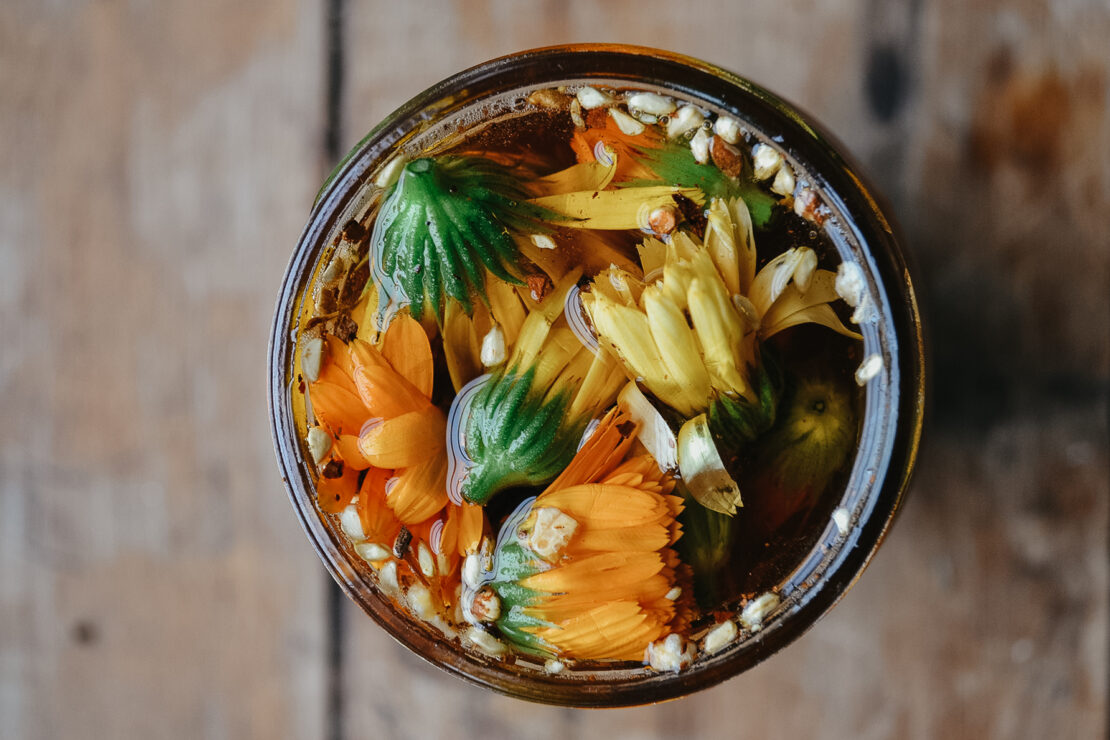
Elderberry Calendula Cold and Flu Elixir
Herbalists need to be good at multi-tasking and planning, like a juggler with three or four balls in the air. Late summer is a good example, when I am simultaneously picking the calendula flower heads daily and setting them to dry, planting another round of cilantro, wildcrafting the last of the mugwort before it goes completely to flower and seed, and decanting whatever tinctures and oils I made and set aside in June. And all the while, I am keeping an eye on the elderberries, watching them ripen, determined not to miss the small window when the berry clusters turn dark purpley black and droop heavily on the stem. The birds certainly won’t! This cycle of planting and harvesting connects me to earth’s seasonal rhythms beautifully, but there is no rest for the weary!
With the calendula bloom in full swing and elderberries ripe on the bush, it’s not only time to harvest, but also to plan ahead for the cold and flu season of autumn and winter. I especially enjoy making medicine from fresh plants, so this is the time to make my favorite cold and flu remedy – Elderberry Calendula Cold and Flu Elixir – including both elderberry and calendula, rose hips, orange peel, ginger, and elderflower.
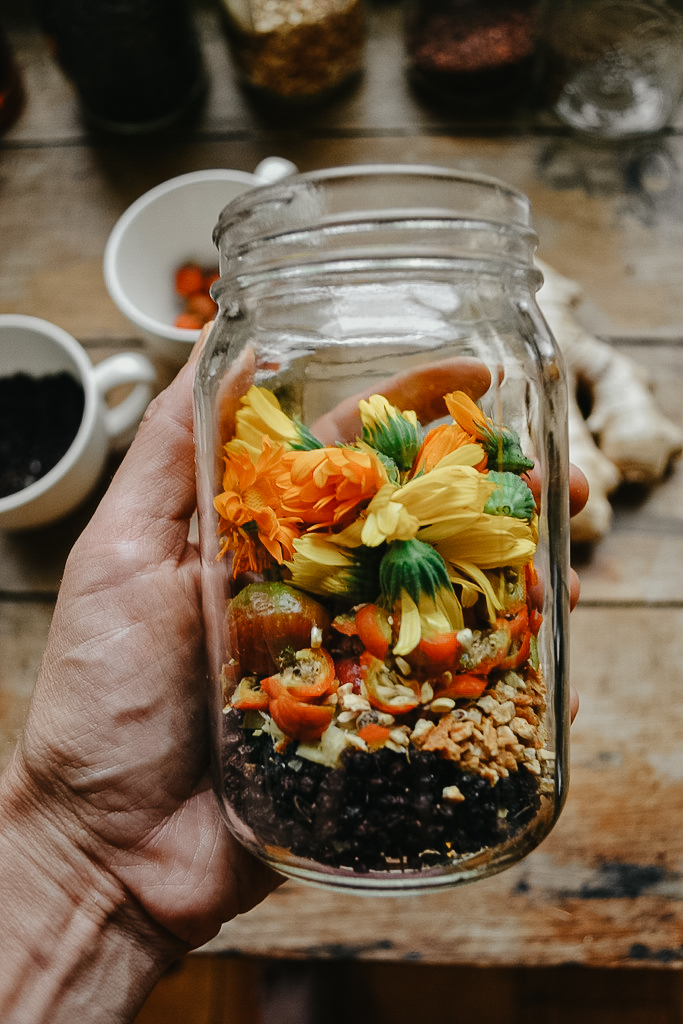
The formula uses a similar base as other elderberry elixirs and cold and flu elixirs (such as Kiva Rose Hardin’s elderberry elixir and Kami McBride’s cold and flu elixir) which all use brandy to extract the plant constituents and honey to sweeten it up – but with an Herbal Academy twist! The recipe is very versatile in that you can use fresh or dried herbs and make additions or substitutions of herbs based on your own preferences. I often add a few tablespoons of cinnamon chips and extra ginger and honey.
Herbs for Colds and the Flu
Elderberry is a mainstay in many an herbalist’s apothecary as the go-to herb at the very initial signs of cold or flu (we always have Elderberry Syrup on hand). Taken at onset, elderberry can reduce the duration of cold and flu because it helps stimulate the immune system and resist infection. As an antiviral, it interferes with virus replication and strengthens cell walls to inhibit viral penetration (Hoffmann, 2013). Researchers have concluded that the flavonoids in elderberry inhibit H1N1 flu virus activities, with elderberry extract comparing favorably to Tamiflu and Amantadine (Roschek, et al., 2009). Scientific research also shows that elderberry reduces the duration of illness by less than half (Zakay-Rones, 1995). Elderberry also relieves coughs and congestion associated with lower respiratory viral infections, promoting expectoration of mucus associated with bronchial infections.
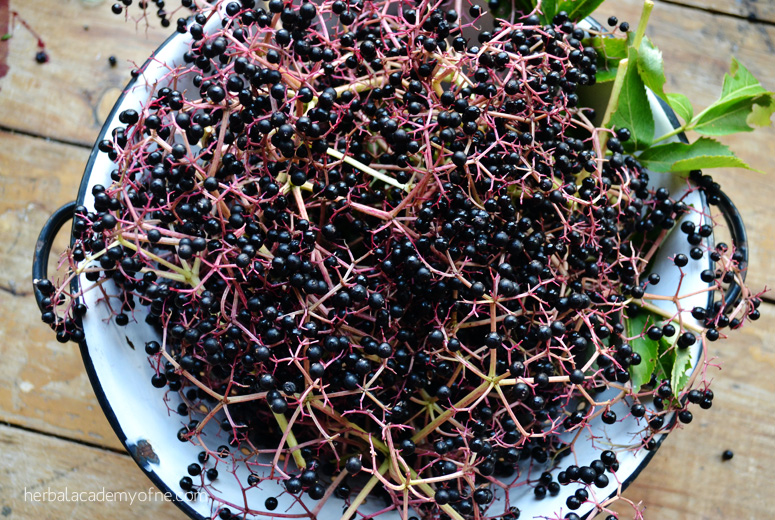
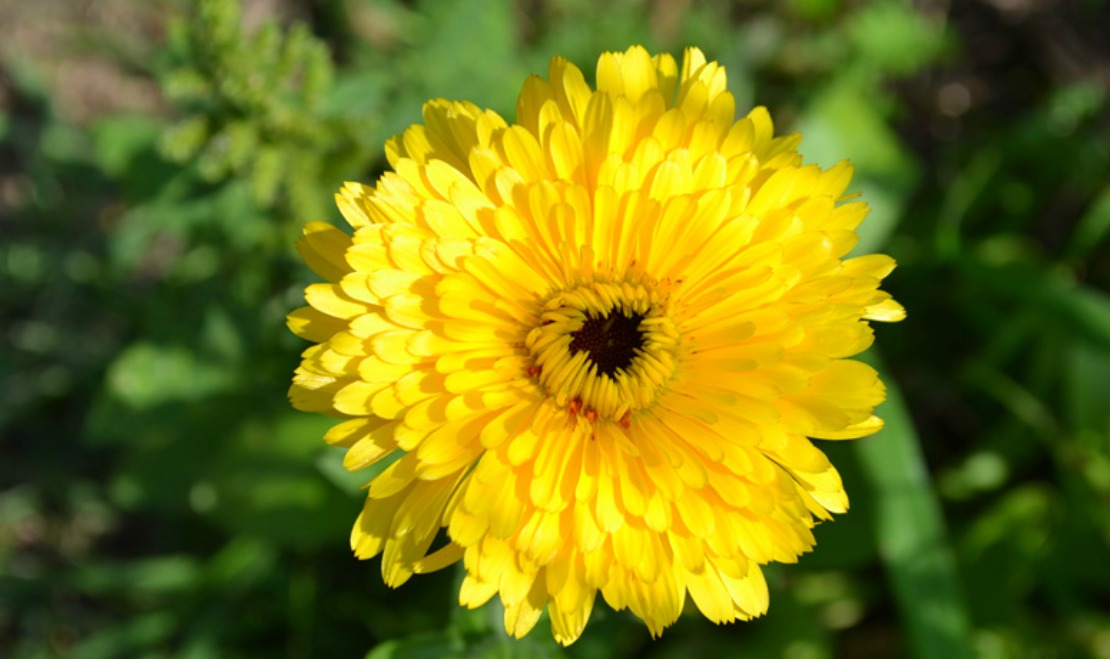
Calendula is perhaps best known as a first aid plant for cuts and wounds, however, it is also used internally as an antimicrobial to help the body resist pathogens such as bacteria, viruses, and fungi. Research has shown that calendula is effective against flu and herpes viruses (McIntyre, 1996). Calendula is also an effective lymphatic cleanser, reducing lymphatic congestion and infection and supporting removal of toxins from the lymph system. You can read more about calendula here.
This recipe also includes elderflower and ginger, which are antivirals as well as diaphoretics, stimulating circulation and promoting sweating, supporting removal of toxins from the body and easing fever after its work of killing pathogens is done. Both herbs are also helpful for upper respiratory congestion, thinning mucus and expelling it from the body. Ginger is also a catalyst, helping to increase the action of the other antimicrobial herbs in the recipe by dilating blood vessels and enhancing circulation.
And last but not least, both the elderberries and the rose hips are high in vitamin C, which gives the body a boost in fighting colds and flus. See below for a powerful Cold and Flu Elixir.
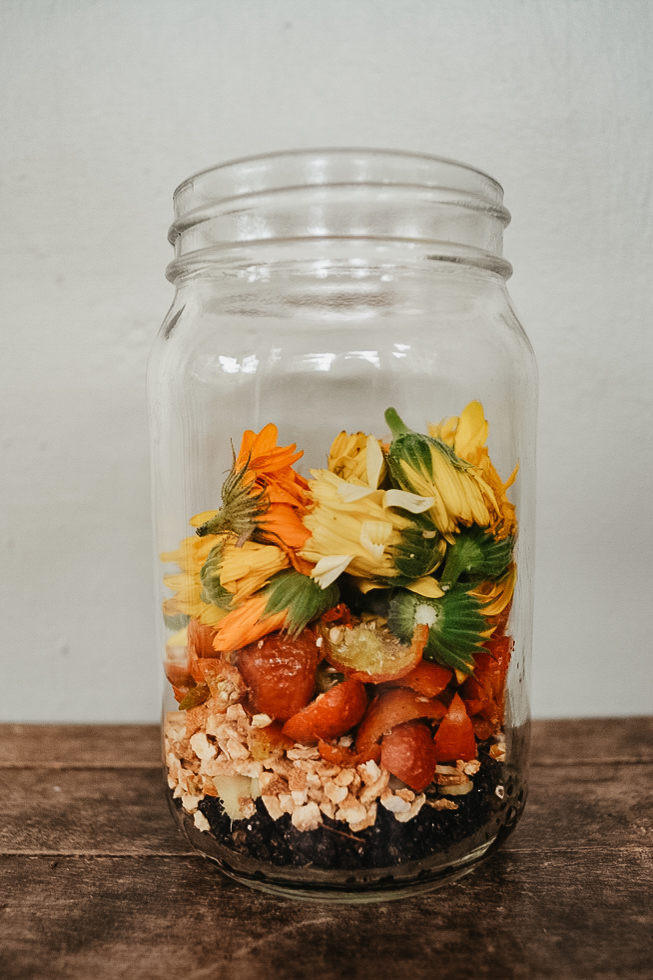
Elderberry Calendula Cold and Flu Elixir Recipe
1 cup fresh (or 2/3 cup dried) calendula flowers
2/3 cup dried elderberries
1/2 cup fresh (or 1/3 cup dried) elderflowers
1/2 cup fresh (or 1/3 cup dried) rose hips
2 tablespoons fresh (or 1 tablespoon dried) orange peel
1 tablespoons fresh (or 1 teaspoon dried) ginger
Brandy
Honey
- Fill a clean, sterilized quart jar (4 cup capacity) with herbs.
- Add brandy, pouring until herbs covered by 1-2 inches of brandy and jar is approximately 3/4 full.
- Add honey, leaving 1 inch of space at the top of the jar.
- Poke chopstick into jar to release any trapped air bubbles and ensure brandy and honey are coating herbs.
- Put cap on and label jar with ingredients and date.
- Let steep for 4-6 weeks in a cool, dark place, shaking daily.
- Filter elixir by pouring through a fine mesh filter or several layers of cheesecloth over a bowl or wide-mouth jar. Press the marc (plant material) to squeeze out every last drop of elixir.
- Compost the marc and cap and label the elixir.
Using the Cold and Flu Elixir
At the first symptoms of a cold or flu coming on, I take 2-3 teaspoons of elixir every two to three hours. Frequent doses are the key to effective use! Listen to your body to tailor the dosage to your needs.
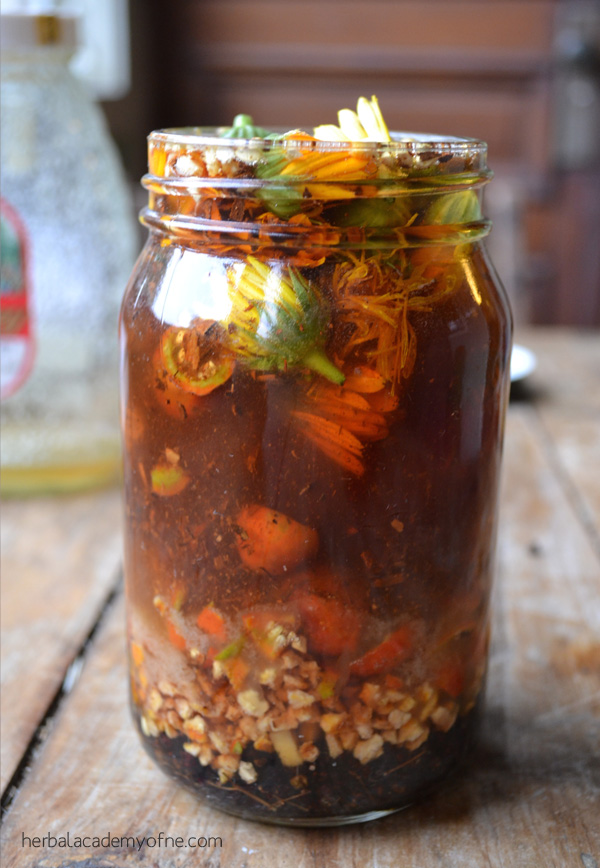
Due to its immune-building, antimicrobial nature and high vitamin C content, this elixir can also be used before the onset of colds and flus. If your friends, family, or coworkers start sniffing and sneezing or moaning and groaning with cold and flu symptoms, try 2-3 teaspoons two or three times a day.
If you are interested in learning more about herbs and how to use them for health and wellness, we invite you to join us in our online courses. We’re enrolling new students in both the Online Introductory Herbal Course and Intermediate Herbal Course. Join us!
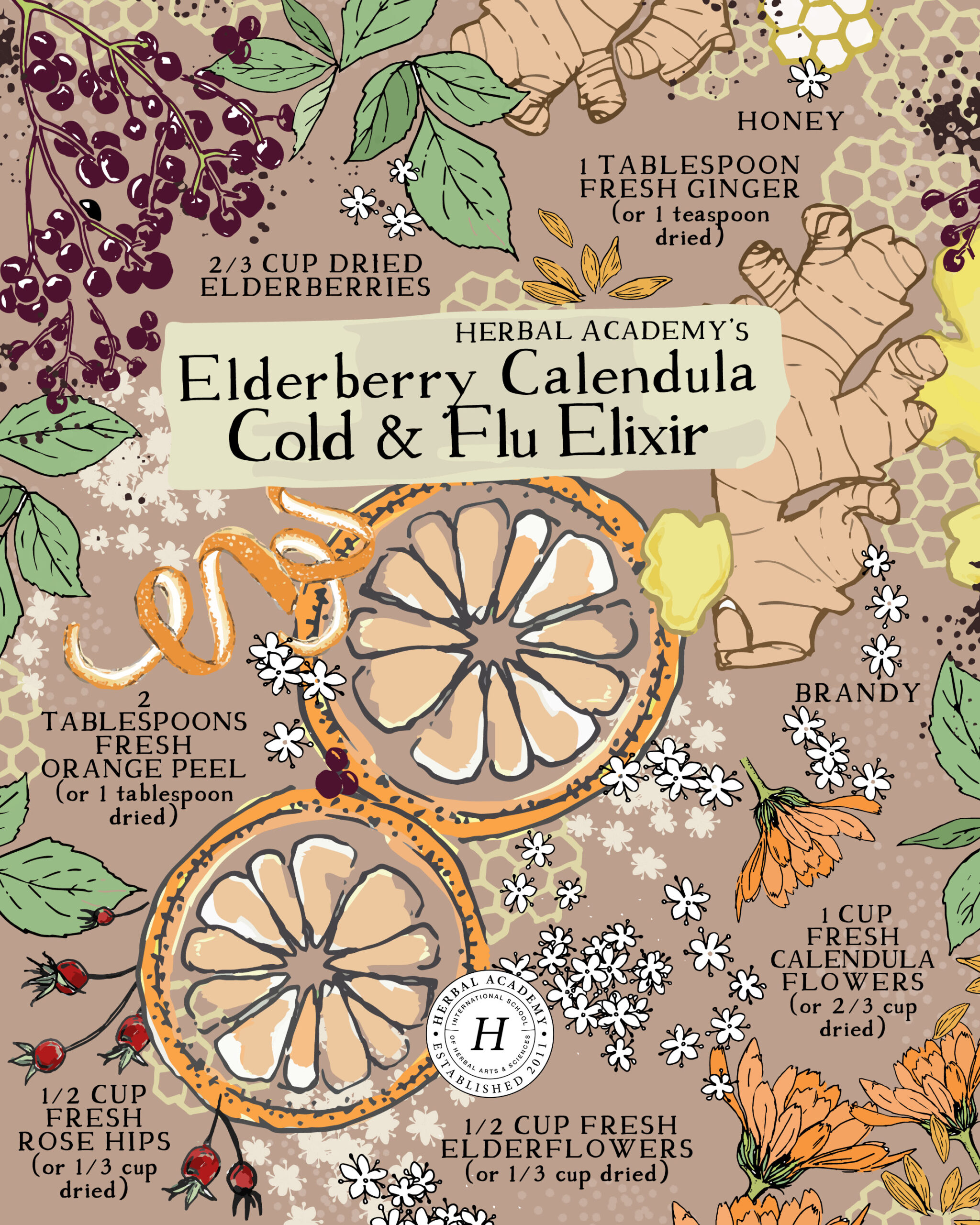
REFERENCES
Hoffmann, David. (2003) Medical herbalism. Rochester, VT: Healing Arts Press.
McBride, Kami. (2010). The herbal kitchen. San Francisco, CA: Conari Press.
Hardin, Kiva Rose (2007). Elderberry Elixir. http://bearmedicineherbals.com/another-gratuitous-elderberry-post.html
McIntyre, Anne. (1996). Flower power. New York, NY: Henry Holt and Company, Inc.
Roschek B Jr, Fink RC, McMichael MD, Li D, Alberte RS. (2009). Elderberry flavonoids bind to and prevent H1N1 infection in vitro. Phytochemistry. Jul;70(10):1255-61
Zakay-Rones, Z, et al. (1995). Inhibition of several strains of influenza virus in vitro and reduction of symptoms by an elderberry extract (Sambucus nigra L.) during an outbreak of influenza B Panama, Altern Complement Med, 1(4):361-9, 1995.







